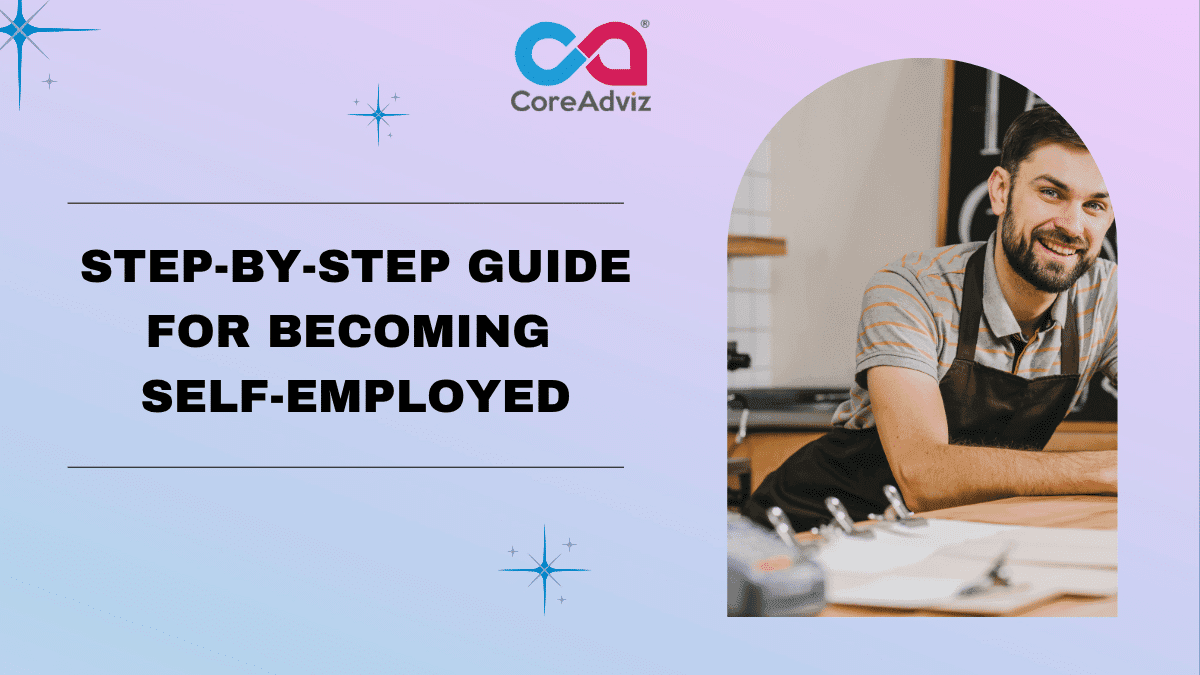
HomeBlog Step-by-Step Guide for Becoming Self-Employed
Step-by-Step Guide for Becoming Self-Employed
Kausik MukherjeeBusiness
Starting your own business is exciting but scary too. You may want to work for yourself to follow your dreams and escape the daily office routine. You can have more control over your own work. Even you can maintain a good work life balance. Self-employment gives you freedom and flexibility that regular jobs often don’t. But running your own business comes with various new responsibilities and challenges. You may have to plan carefully if you face such challenges.
Here is an in-depth guide that walks you through the critical steps necessary to successfully transition into self-employment.
Step 1: Validate Your Business Idea
Now, before you dive in, it is important to make sure that your business idea is viable. First and foremost, research your target market: who will buy from you? What problem will you be solving for them?
Conduct some competitor analysis to understand what others in your space are offering, and then identify the gaps you can fill. Talk to potential customers, gather feedback and then refine your concept based on real-world insights. This way you can save your time by investing on the idea that will work rather than investing on investing time and money into an idea that won’t provide a sustainable income.
Step 2: Create a Business Plan
A good business plan is your roadmap to success. It should cover the essential components like your business goals, target audience, marketing strategy, financial projections and operational plan.
Step 3: Register Your Business
In the UK, if you make more than £1,000 from self-employment in a year then you are required to register as self-employed with HMRC. You will have to register for Self-Assessment and get a Unique Taxpayer Reference number.
Choose your business structure: Most start off as sole traders because this is the simplest option. Alternatively, you may form a limited company if it provides some tax advantages or if such a structure will better suit your needs. Each of these structures has different implications concerning liability, taxes, and administration.
Choose and register your business name, making sure the name isn’t already trademarked or in use. If you are a sole trader then only you can trade under your own name or under a business name.
Step 4: Sort Out Your Finances
Open a separate business bank account to keep your personal and business finances separate; it makes accounting much easier and looks more professional to clients. Set money aside for taxes from the very beginning. You will be subject to income tax and National Insurance. A general rule of thumb is to save 25-30% of your income for tax obligations. Consider business insurance. You may be required to have professional indemnity insurance, public liability insurance, or other insurance depending upon your line of work. Invest in accounting software or outsource it to an accountant for the keeping of books. Keeping accurate financial records from day one will save headaches during tax season, as well as help you make informed business decisions.
Step 5: Build Your Brand and Online Presence
In today’s digital world, an online presence is critical. Create a professional website that clearly communicates what you offer, showcases your expertise, and makes it as easy as possible for potential clients to get in touch with you. Build a strong brand identity-complete with a logo, color scheme, and consistent messaging-across all platforms. Your brand should reflect your values and resonate with your target audience. Build profiles on all social media platforms. Publish high-quality content, interact with your audience, and establish credibility in your niche.
Step 6: Set Your Pricing
Pricing your services or products correctly is critical. Research industry standards, but don’t undervalue yourself. You should consider all the business expenses, including your tools and software. Also consider the insurance and marketing cost.
Step 7: Market your services
A great product or service means nothing if nobody knows about it. Develop a marketing strategy that aligns with your budget. Do the marketing in both ways online and offline. Attend industry events, join professional associations and connect with potential clients and collaborators. Word-of-mouth remains one of the most powerful marketing tools. Consider content marketing via blogging, videos, or podcasts that show off your expertise. Utilize email marketing, social media advertising, and search engine optimization to attract customers.




